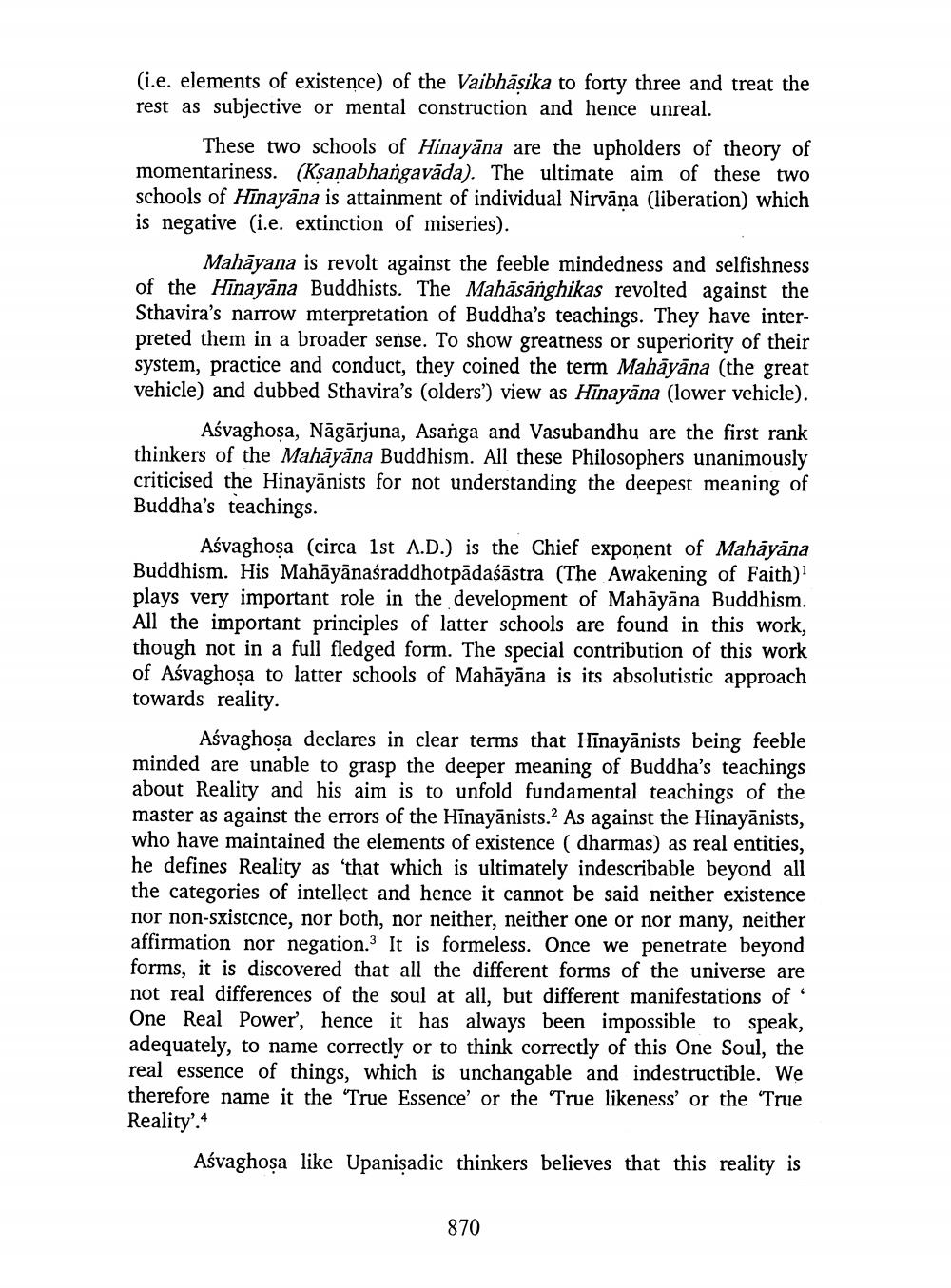________________
(i.e. elements of existence of the Vaibhāsika to forty three and treat the rest as subjective or mental construction and hence unreal.
These two schools of Hinayāna are the upholders of theory of momentariness. (Ksanabhangavāda). The ultimate aim of these two schools of Hīnayāna is attainment of individual Nirvana (liberation) which is negative (i.e. extinction of miseries).
Mahāyana is revolt against the feeble mindedness and selfishness of the Hinayāna Buddhists. The Mahāsānghikas revolted against the Sthavira's narrow mterpretation of Buddha's teachings. They have interpreted them in a broader sense. To show greatness or superiority of their system, practice and conduct, they coined the term Mahāyāna (the great vehicle) and dubbed Sthavira's (olders') view as Hinayāna (lower vehicle).
Aśvaghosa, Nāgārjuna, Asanga and Vasubandhu are the first rank thinkers of the Mahāyāna Buddhism. All these Philosophers unanimously criticised the Hinayānists for not understanding the deepest meaning of Buddha's teachings.
Ašvaghosa (circa 1st A.D.) is the Chief exponent of Mahāvāna Buddhism. His Mahāyānaśraddhotpādaśāstra (The Awakening of Faith) plays very important role in the development of Mahāyāna Buddhism. All the important principles of latter schools are found in this work, though not in a full fledged form. The special contribution of this work of Aśvaghoșa to latter schools of Mahāyāna is its absolutistic approach towards reality.
Ašvaghosa declares in clear terms that Hinayānists being feeble minded are unable to grasp the deeper meaning of Buddha's teachings about Reality and his aim is to unfold fundamental teachings of the master as against the errors of the Hīnayānists.? As against the Hinayānists, who have maintained the elements of existence ( dharmas) as real entities, he defines Reality as 'that which is ultimately indescribable beyond all the categories of intellect and hence it cannot be said neither existence nor non-sxistence, nor both, nor neither, neither one or nor many, neither affirmation nor negation. It is formeless. Once we penetrate beyond forms, it is discovered that all the different forms of the universe are not real differences of the soul at all, but different manifestations of One Real Power, hence it has always been impossible to speak, adequately, to name correctly or to think correctly of this One Soul, the real essence of things, which is unchangable and indestructible. We therefore name it the True Essence or the True likeness' or the 'True Reality'."
Ašvaghosa like Upanisadic thinkers believes that this reality is
870




